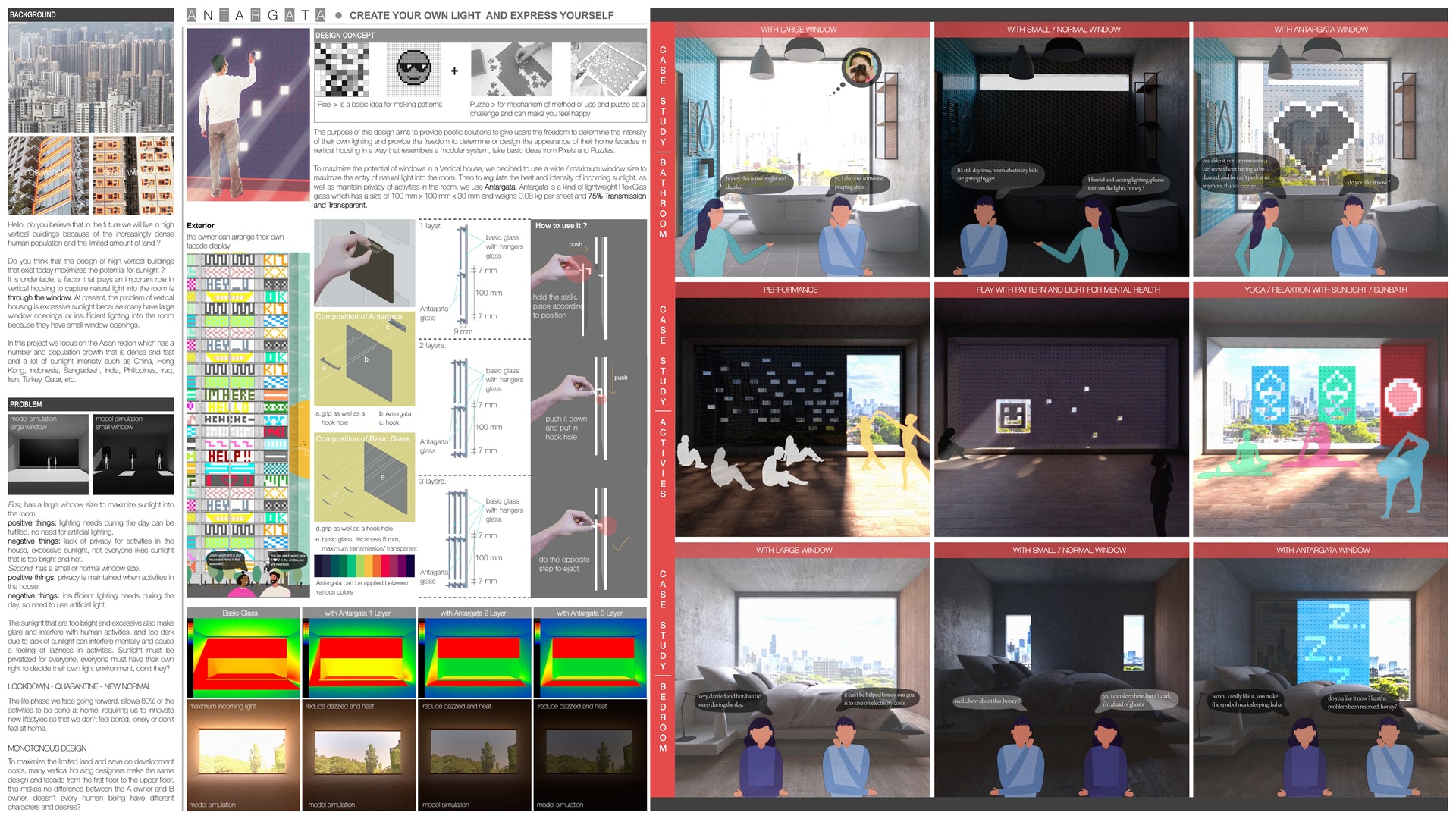Project Description
Hello, do you believe that in the future we will live in high vertical buildings because of the increasingly dense human population and the limited amount of land? Do you think that the design of high vertical buildings that exist today maximizes the potential for sunlight? In this project, we focus on the Asian region which has a number and population growth that is dense and fast and a lot of sunlight intensity such as China, Hong Kong, Indonesia, Bangladesh, India, Philippines, Iraq, Iran, Turkey, Qatar, etc. It is undeniable, a factor that plays an important role in vertical housing to capture natural light into the room is through the window. At present, the problem of vertical housing is excessive sunlight because many have large window openings or insufficient lighting into the room because they have small window openings. We did an analysis of the effect of window size on vertical housing : First, it has a large window size to maximize sunlight into the room. positive things -: lighting needs during the day can be fulfilled, no need for artificial lighting. negative things -: lack of privacy for activities in the house, excessive sunlight, not everyone likes sunlight that is too bright and hot. Second, it has a small or normal window size. positive things -: privacy is maintained when activities in the house. negative things -: insufficient lighting needs during the day, so need to use artificial light. The sunlight that is too bright and excessive also make glare and interfere with human activities, and too dark due to lack of sunlight can interfere mentally and cause a feeling of laziness in activities. Sunlight must be privatized for everyone, everyone must have their own right to decide their own light environment, don't they? LOCKDOWN - QUARANTINE - NEW NORMAL The life phase we face going forward, allows 80% of the activities to be done at home, requiring us to innovate new lifestyles so that we don't feel bored, lonely, or don't feel at home. MONOTONOUS DESIGN To maximize the limited land and save on development costs, many vertical housing designers make the same design and facade from the first floor to the upper floor, this makes no difference between the A owner and B owner, doesn't every human being have different characters and desires? DESIGN CONCEPT The purpose of this design aims to provide poetic solutions to give users the freedom to determine the intensity of their own lighting and provide the freedom to determine or design the appearance of their home facades in vertical housing in a way that resembles a modular system, take basic ideas from Pixels and Puzzles. Pixel is a basic idea for making patterns and Puzzles for the mechanism of the method of use and puzzle as a challenge and can make you feel happy. To maximize the potential of windows in a Vertical house, we decided to use a wide / maximum window size to maximize the entry of natural light into the room. Then to regulate the heat and intensity of incoming sunlight, as well as maintain the privacy of activities in the room, we use Antargata. Antargata is a kind of lightweight Plexiglas glass which has a size of 100 mm x 100 mm x 30 mm and weighs 0.08 kg per sheet and 75% Transmission and Transparent. Various activities that can be supported by Antargata such as Performance with Light, Yoga, Sunbath, Relaxation with Light, Play with Pattern and Light for Mental Health, etc. And users can change at any time the appearance of their vertical house facade, for example when the user is in love, the user will make the appearance of the facade can be formed symbolizing love or a picture of the heart.
